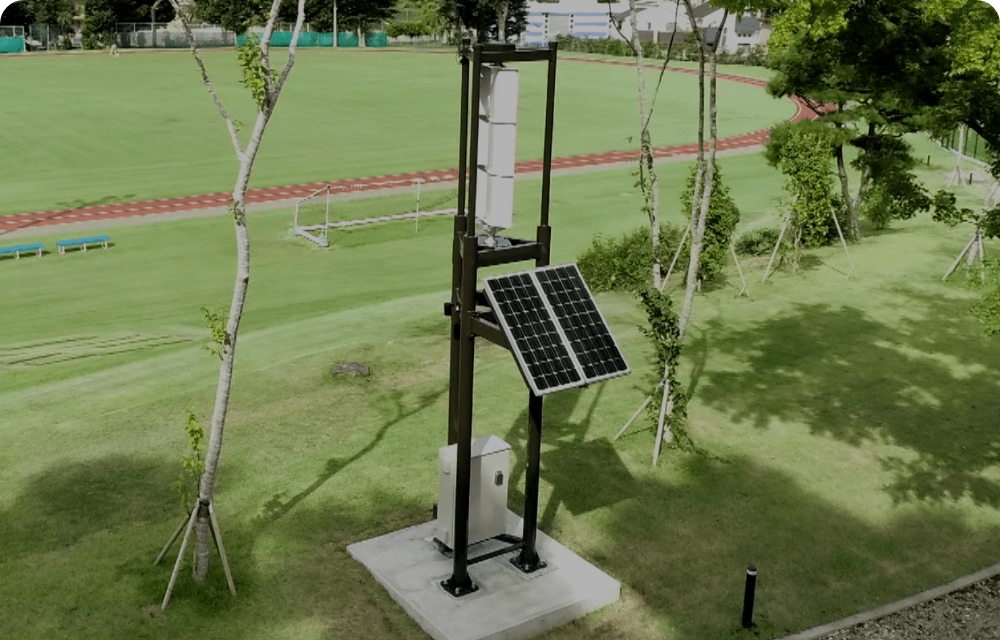A tough, small wind turbine that can be used as an
emergency power source during disasters.
Vertical Axis Savonius-type
Wind Turbine Type D
Features
Since it is wind powered, it can generate
electricity 24 hours a day.
Ideal as an emergency power source in times of
disaster at evacuation facilities such as schools
and parks, and as part of BCP* measures for
companies.
and in times of disaster.
It can also be used to directly charge smartphones and other devices from its built-in
USB port as an emergency power source.
Compact design allows installation in
a wide
range of locations.
- Evacuation facilities
- Disaster prevention parks
- Coastal areas
- River beds
- Observatories
Technology
Thanks to a unique wind turbine design* it generates electricity surprisingly
quietly, regardless of wind direction.
Noise level
49dBThe same level as that of a household air conditioner or a ventilation fan. The structure is designed to minimize unpleasant noise.
※Measured at a distance of 1m from the wind turbine at a wind speed of 7m/s.
Withstandable
wind speed40m/sA structure capable of withstanding strong winds equivalent to those of strong typhoons, that may cause trees to fall or houses to collapse.
Rated output
100wPower generation at wind speed of 11m/s
Maximum
output250wPower generation at wind speed of 14.5m/s
Type D’s range of wind speeds for
power generation

It has a ‘People Friendly’ design and can
be installed anywhere.
Low noise
It is a quiet wind turbine that does not generate unpleasant noises.
Low rotational speed
It is a safe wind turbine that rotates slowly and does not cause any sense of fear.
Examples of the introduction of Type D

Demonstration Experiment
SETAGAYA Qs-GARDEN
We have started our demonstration experiment at SETAGAYA Qs-GARDEN in Setagaya Ward, aiming to the realization of wind power generation systems that can be installed in densely populated residential areas.
Step
Introduction process
- 1Basic concept and consideration of potential installation locationsStudy of wind conditions, etc., confirmation of wind conditions and topography at the installation location.
- 2Preliminary study (wind conditions study, ground study)Confirm whether there has been a past ground study near the considered location and conduct a soil boring test. Estimate the power generation based on wind data, planning the installation of the wind turbine(s), and determining the system configuration.
- 3Wind turbine installation contractConclusion of contracts regarding costs, schedule, maintenance, etc.
- 4ConstructionFinished approximately 1 month within the conclusion of the installation contract.
- 5Beginning of operationBeginning of maintenance inspections (annual visual check/lubrication).
Detail
Specifications

*Example layout
Wind Turbine Type
Savonius-type Wind TurbineWind Turbine size
Height 1.5m, diameter 0.7mWeight (Wind Turbine body)
55.5kgRated output
100WMaximum output
250WWind speed for rotation start of wind turbine
2m/sCut in wind speed
3m/sCut out wind speed
14.5m/sRated wind speed
11m/sWithstandable wind speed
40m/sNoise level
49dB※Measured at a distance of 1 m from
the wind turbine at a wind speed of 7 m/s.Service life
10 years
